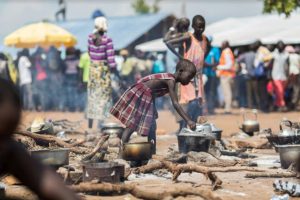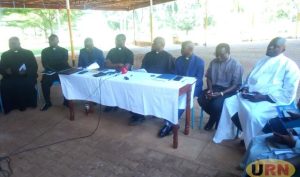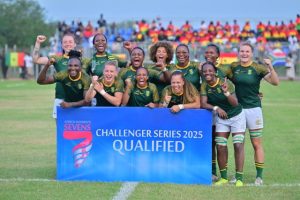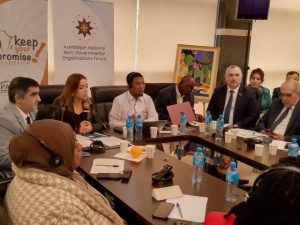This photograph is not of Uganda Martyrs!
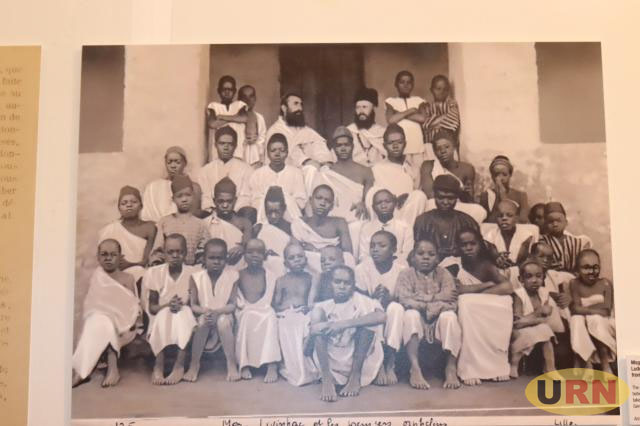
Curators Correct Mistaken Identity of Uganda Martyrs
Namugongo, Uganda | CHRISTOPHER KISEKKA – URN | One of the most iconic photographs capturing what many thought were the faces of the earliest Catholic converts in Uganda has come under fresh scrutiny.
Curators now say the people in the photograph were not the converts who were martyred between 1885 and 1887. They believe the were instead freed slaves.
For years, a widely circulated photograph was thought to offer a glimpse into the faces and appearance of the Uganda Martyrs, including those burned at Namugongo.
This image has been prominently displayed in Catholic homes, newspapers, television programs, and various media outlets as a visual representation of these revered martyrs who were canonized 60 years ago.
However, recent research by curators led by Dr. David Tshimba, who organized a martyrs’ exhibition at Uganda Martyrs University Lubaga Campus, has uncovered a surprising twist: the photograph does not depict any of the Uganda Martyrs.
Dr David Tshimba explains that during their search for items related to the martyrs, including their journey to the headquarters of the Missionaries of Africa (White Fathers) in Rome, they uncovered information revealing that the photograph depicts freed slaves and children rescued by the missionaries, rather than the Uganda Martyrs.
To shed more light on the matter, Dr. Tshimba notes that most of the Uganda Martyrs were pages in the Kabaka’s court, and some, like Mukasa Balikuddembe, were even considered for high offices such as Katikiro (Prime Minister). This, to him, suggests that they were likely well-off and would have worn better clothing than what is depicted in the photograph.
“This was a misrepresentation of facts, and through this display, we need people to critically analyze and deconstruct it,” the curator said pointing to the photo displayed in the exhibition with the caption: Msgr. Leon Livihac and Fr. Giruat Liudovic with ransomed slave children,1885.
The story of the Uganda Martyrs
#MartyrsDay2020 programhttps://t.co/xgzaJUtEjh pic.twitter.com/PBbDCCpSuB
— Louis Jadwong (@Jadwong) June 3, 2020
The display, credited to the Archives of the Missionaries of Africa in Rome, also clarified that the children were ransomed from Uganda between 1879 (the year the White Fathers arrived in Buganda) and 1882. Furthermore, it noted that the photo was taken at Bukumbi in the Mwanza region of German East Africa (now Tanzania).
John Baptist Ssemitego from the Uganda Martyrs Guild who is part of the team that organised the exhibition also echoed similar sentiments about the photograph. He criticized those who first published and misidentified the photo, attributing the confusion to incorrect labelling.
Originally, the photo was tagged as depicting some of the future Uganda Martyrs and claimed to show them in 1885 at Bukumbi Mission in Mwanza, where they had gathered to welcome the new Catholic bishop, Léon Livinhac.
Ssemitego said that it would have been impossible for all 22 pages from Kabaka’s court to travel to Bukumbi simultaneously without Kabaka’s knowledge.
Additionally, he points out that such an event would have been recorded in the diaries of the White Fathers, who meticulously documented daily events twice a day, both in the morning and afternoon.
He argued that the absence of any mention of this journey in their records further suggests that the photograph does not depict the Uganda Martyrs.
The photo features a group of 34 children, including both boys and girls, seated on a veranda in the company of Bishop Léon Livinhac and Fr. Giruat Liudovic at Bukumbi Mission in Mwanza, then part of northern Tanganyika. The photograph has long been cited as a valuable reference for those trying to imagine what the Uganda Martyrs might have looked like.
It became particularly renowned for its detailed captions, which purportedly identified 20 of the 22 martyrs by name. For example, a male in the front row was labelled number 3 and in the caption identified as Mukasa Kirigwajjo, while a seemingly older youth with a distinctive attitude dressed in a unique attire was identified as Balikuddembe Mukasa.
Dr. Tshimba explained that, according to their research, the first time the Uganda Martyrs were photographed was through the imagination of one of the White Fathers, guided by available information. He added that at no point did the converts or future martyrs pose for a photo before a camera.
Tshimba also noted that guided by information gathered during the canonization process, an artist’s impression or illustration of the martyrs was created by Albert Wider in 1962. This illustration was featured on a large banner displayed during the canonization day at the Vatican, on 18 October 1964. The illustration is now also on display in the ongoing exhibition, alongside other historical items.
To him, the current exhibition, which displays the photograph, aims to help the public deconstruct this misleading image from their minds.
*****
URN
The post This photograph is not of Uganda Martyrs! appeared first on The Independent Uganda:.


